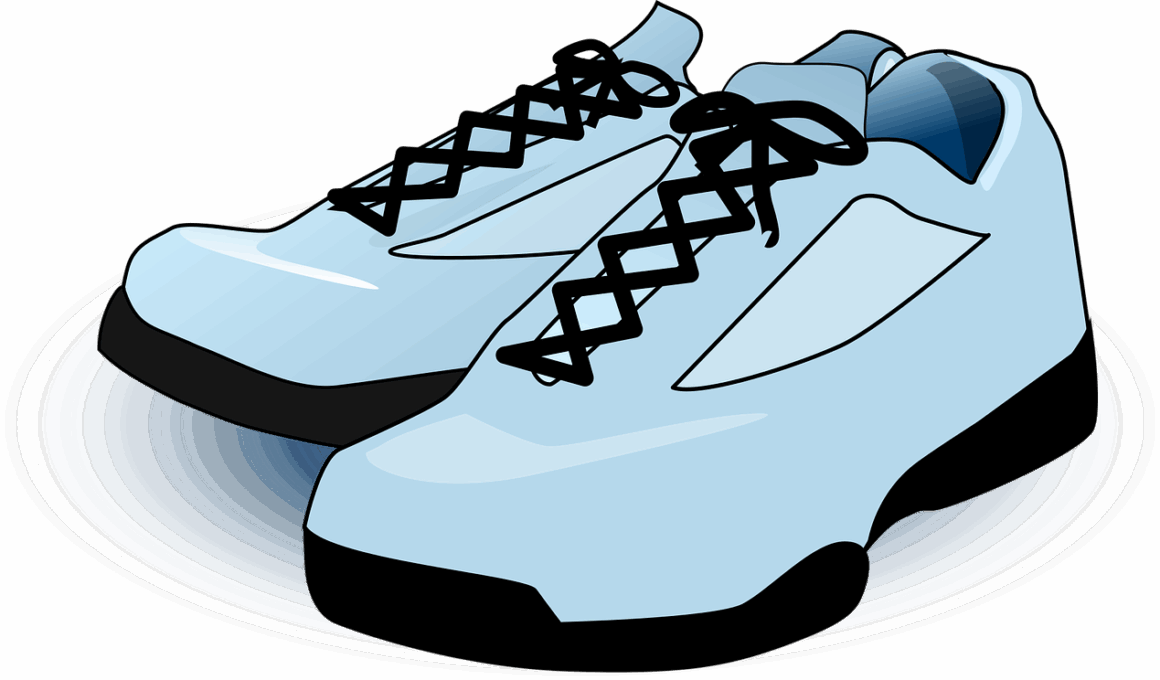Latest Materials Used in Athletic Footwear Manufacturing
The evolution of athletic footwear has been remarkable, primarily influenced by advancements in materials. Modern athletic shoes now incorporate cutting-edge materials that enhance performance, durability, and comfort. One of the predominant materials used is engineered mesh, renowned for its lightweight and breathable qualities. It offers superior ventilation, keeping athletes’ feet cool during intense activities. Additionally, rubber compounds specifically formulated for outsoles provide excellent traction, thereby reducing the risk of slips and falls. These compounds often feature a blend of different rubber types, ensuring flexibility without sacrificing grip. The integration of cushioning materials, such as EVA (ethylene vinyl acetate), has also seen a surge in popularity. EVA provides responsive cushioning, absorbing impact forces effectively. Moreover, some brands now utilize biodegradable foams to contribute to sustainability. These eco-friendly alternatives do not compromise performance while promoting environmental responsibility. Furthermore, 3D printing technology is making its mark in footwear manufacturing, allowing for customized fitting and design, making shoes more effective. As athletic performance continues to evolve, these materials play an essential role in ensuring athletes can perform at their best, minimizing injuries, and enhancing their overall experience on the field.
Innovative Foam Technologies
In the realm of athletic footwear, innovative foam technologies have transformed how we perceive cushioning. Traditionally, most shoes utilized standard EVA foam, but newer formulations like PU (polyurethane) and proprietary blends are changing the game. These innovative foams provide superior energy return and can be tailored to specific activities, ensuring optimal performance for runners versus basketball players. Brands have introduced unique foams such as Adidas’s Boost and Nike’s React, boasting extraordinary performance attributes aimed at enhancing lumbar support and responsiveness. In addition, advancements in biodegradable or recycled foams are aligning athletic footwear development with a more sustainable future. Such materials not only reduce waste but also offer lightweight characteristics that make them attractive for modern runners. Moreover, the use of carbon-infused foams is gaining attention due to their ability to enhance propulsion, particularly with long-distance running shoes. Aimed at improving speed and ensuring foot stability, these materials are carefully engineered. As the market continues to demand more customized experiences, foam technologies stand at the forefront, ensuring that athletes get superior comfort and performance as they push their limits.
Furthermore, the integration of knitted upper technologies signifies a pivotal shift in how athletic shoes are constructed. Knitting offers a seamless, sock-like fit that conforms to the shape of the foot, which is essential for comfort and stability. By utilizing advanced 3D knitting techniques, manufacturers can create lightweight uppers that provide ample support without adding unnecessary bulk. This innovative approach not only enhances flexibility during movement but also minimizes the risk of chafing. Companies like Nike have mastered this technique, creating their Flyknit materials that blend support with breathability. As athletes continuously seek shoes that can adapt to their movements, knitted uppers are becoming an increasingly popular choice. Additionally, the quick-drying properties of many knitted materials render them ideal for various weather conditions, enhancing their utility. Also, the eco-conscious consumer can appreciate that some brands are incorporating recycled materials into their knitted fabrics, contributing to sustainability efforts. As athletes become more attuned to their footwear needs, knitted upper technologies are critical in meeting performance demands, ensuring comfort, and promoting environmental responsibility.
Advancements in Outsole Technologies
The outsole of athletic footwear is vital to maintaining athlete safety and enhancing performance. Recent advancements focus on hybrid technologies that blend various materials to create superior traction and durability. For instance, incorporating carbon rubber into outsoles offers a balance of excellent grip and extended lifespan, making them suitable for diverse terrains. Furthermore, brands like Asics have pioneered gel-based technologies that enhance shock absorption, thereby providing additional comfort during high-impact activities. These innovations ensure shoes can withstand wear while maintaining performance reliability. Another key aspect of outsole development includes advanced tread designs tailored for specific sports, ensuring optimal surface contact and grip. Lightweight outsoles made from EVA combined with carbon fiber reinforcements offer additional responsiveness. The advancements in outsoles also extend to fitness applications, incorporating multidirectional traction patterns for courts and turf fields, providing athletes with the stability they require. Additionally, sustainability plays a role in outsole innovation, with brands exploring eco-friendly rubber alternatives, ensuring their products align with modern consumer expectations. As athletes’ needs diversify, advancements in outsole technologies are paramount in enhancing overall athletic performance.
Additionally, the adoption of moisture-wicking linings inside athletic footwear has become increasingly crucial for comfort during rigorous activities. Many athletes struggle with sweating, which can lead to discomfort or blistering. Innovative lining materials like polyester and merino wool have been engineered to not only wick moisture away but also regulate temperature, allowing for breathability. Brands are now focusing on integrating these moisture-wicking technologies into their footwear designs, providing an extra layer of comfort during long workouts. Furthermore, some modern shoes feature antimicrobial treatments within the linings, combatting odor and bacterial growth, which can be especially beneficial for multi-use footwear. In addition, brands are exploring biodegradable moisture-wicking materials to align with the growing sustainability trend. The incorporation of reflective linings and branding has also become more popular not only for aesthetics but for added safety during nighttime activities. As athletes invest in performance-enhancing footwear, the unique benefits of moisture-wicking linings ensure maximum investment satisfaction and optimal comfort levels. Such careful attention to detail is essential in modern athletic footwear manufacturing to meet the needs of today’s active individuals.
The Role of Sustainability in Footwear Manufacturing
As sustainability becomes a pressing concern for consumers, its influence on athletic footwear manufacturing is undeniable. Brands now focus more on eco-friendly materials and practices throughout their production processes. For instance, recycled plastics are increasingly being incorporated into upper materials, reducing overall environmental footprint. Innovative brands are developing shoes from ocean plastics, transforming waste into functionality, thereby promoting a healthier planet. Furthermore, zero-waste manufacturing processes are being adopted to minimize waste during production. Many brands are also committing to using plant-based materials, which not only decrease reliance on finite resources but also provide consumers with high-performance footwear. Such materials can reduce carbon emissions while still meeting performance standards. The industry’s increased transparency is evident, as many brands showcase their sustainability efforts through dedicated marketing campaigns. Consumers are becoming more aware and selective, emphasizing the need for brands to prioritize eco-conscious practices consistently. Additionally, companies are investing in technology to create biodegradable outsoles and linings, ensuring that athletic shoes do not contribute to landfill woes. As the dialogue surrounding sustainability grows, footwear manufacturers must innovate to stay relevant, evolving into leaders of environmental responsibility.
Exploring the importance of customization in athletic footwear stands at the forefront of modern consumers’ demands. Athletes and fitness enthusiasts desire shoes tailored to their specific needs, leading to a rise in brands offering customizable options. Many companies now allow individuals to modify aspects such as color, materials, and even fit to create a shoe that aligns perfectly with personal preferences. For instance, Nike and Adidas have pioneered platforms that enable customization down to each detail of the footwear, forging deeper connections with consumers. By utilizing 3D scanning technology, brands ensure precise fittings that offer enhanced performance for runners or court athletes. Such customization not only improves comfort but also leads to increased confidence in performance. Furthermore, brands are starting to introduce limited-edition collections where consumers partake in co-designing the shoes, allowing for a unique touch and exclusivity. The importance of customization is echoed by increased consumer loyalty, as personalized products resonate with today’s active populations. Ultimately, through customization, athletic footwear brands not only meet the technical needs of athletes but also foster a greater community and connection with their consumer base.
Ultimately, the synergy between technology and fashion in athletic footwear remains a hotbed of innovation. As brands strive to present shoes that are not only functional but aesthetically pleasing, the material choices reflect a deeper understanding of consumer desires. The use of bold colors, materials, and eye-catching designs signifies a shift toward shoes that make a statement while providing performance benefits. Lightweight materials such as TPU (thermoplastic polyurethane) allow for artistic freedom in design without compromising usability. Additionally, modern coatings applied to footwear enhance durability, enabling shoes to withstand various environmental factors while maintaining their visual appeal. Designers now incorporate elements from street fashion to sports, blurring the lines between casual wear and performance gear. The rise of collaborations between footwear brands and high-fashion designers exemplifies this trend, as limited collections showcase unique aesthetics while integrating performance technologies. Such collaborations contribute to a culture that celebrates the aesthetic of athletic footwear. As technology evolves, the capacity for brands to fuse fashion with performance will yield dynamic footwear that caters to broader tastes. Thus, the future of athletic footwear manufacturing looks promising, with innovations that cater to diverse audiences becoming more prevalent.


